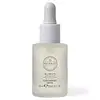What's inside
What's inside
 Key Ingredients
Key Ingredients

 Benefits
Benefits

 Concerns
Concerns

No concerns
 Ingredients Side-by-side
Ingredients Side-by-side

Water
Skin ConditioningVaccinium Myrtillus Fruit/Leaf Extract
AstringentHibiscus Sabdariffa Flower Extract
Skin ConditioningGlycerin
HumectantButylene Glycol
HumectantSaccharum Officinarum Extract
MoisturisingHydroxyethylcellulose
Emulsion StabilisingPhenoxyethanol
PreservativeCitrus Limon Fruit Extract
MaskingCitrus Aurantium Dulcis Flower Extract
Skin ConditioningSodium Hyaluronate
HumectantSodium Benzoate
MaskingAcer Saccharum Extract
Skin ConditioningTetrasodium EDTA
Parfum
MaskingDipropylene Glycol
HumectantBenzoic Acid
MaskingDehydroacetic Acid
PreservativeEthylhexylglycerin
Skin ConditioningWater, Vaccinium Myrtillus Fruit/Leaf Extract, Hibiscus Sabdariffa Flower Extract, Glycerin, Butylene Glycol, Saccharum Officinarum Extract, Hydroxyethylcellulose, Phenoxyethanol, Citrus Limon Fruit Extract, Citrus Aurantium Dulcis Flower Extract, Sodium Hyaluronate, Sodium Benzoate, Acer Saccharum Extract, Tetrasodium EDTA, Parfum, Dipropylene Glycol, Benzoic Acid, Dehydroacetic Acid, Ethylhexylglycerin
Water
Skin ConditioningBetaine
HumectantLactobacillus/Portulaca Oleracea Ferment Extract
AntioxidantButylene Glycol
HumectantPhenoxyethanol
PreservativeCarbomer
Emulsion StabilisingEthylhexylglycerin
Skin ConditioningSodium Hyaluronate
HumectantLeuconostoc/Radish Root Ferment Filtrate
AntimicrobialAlteromonas Ferment Extract
Skin ConditioningBiosaccharide Gum-1
HumectantSodium Hydroxide
BufferingTheobroma Cacao Seed Extract
AntioxidantIngredients Explained
These ingredients are found in both products.
Ingredients higher up in an ingredient list are typically present in a larger amount.
Butylene Glycol (or BG) is used within cosmetic products for a few different reasons:
Overall, Butylene Glycol is a safe and well-rounded ingredient that works well with other ingredients.
Though this ingredient works well with most skin types, some people with sensitive skin may experience a reaction such as allergic rashes, closed comedones, or itchiness.
Learn more about Butylene GlycolEthylhexylglycerin (we can't pronounce this either) is commonly used as a preservative and skin softener. It is derived from glyceryl.
You might see Ethylhexylglycerin often paired with other preservatives such as phenoxyethanol. Ethylhexylglycerin has been found to increase the effectiveness of these other preservatives.
Phenoxyethanol is a preservative that has germicide, antimicrobial, and aromatic properties. Studies show that phenoxyethanol can prevent microbial growth. By itself, it has a scent that is similar to that of a rose.
It's often used in formulations along with Caprylyl Glycol to preserve the shelf life of products.
Sodium Hyaluronate is hyaluronic acid's salt form. It is commonly derived from the sodium salt of hyaluronic acid.
Like hyaluronic acid, it is great at holding water and acts as a humectant. This makes it a great skin hydrating ingredient.
Sodium Hyaluronate is naturally occurring in our bodies and is mostly found in eye fluid and joints.
These are some other common types of Hyaluronic Acid:
Learn more about Sodium HyaluronateWater. It's the most common cosmetic ingredient of all. You'll usually see it at the top of ingredient lists, meaning that it makes up the largest part of the product.
So why is it so popular? Water most often acts as a solvent - this means that it helps dissolve other ingredients into the formulation.
You'll also recognize water as that liquid we all need to stay alive. If you see this, drink a glass of water. Stay hydrated!
Learn more about Water